At first glance, Futurium, the new museum designed by Berlin-based architects Richter Musikowski, reminds me of a spaceship, in iridescent glass and metal with gargantuan panoramic windows. On the banks of the River Spree, sandwiched between office buildings, it is designed to look like a kaleidoscopic geometric crystal.
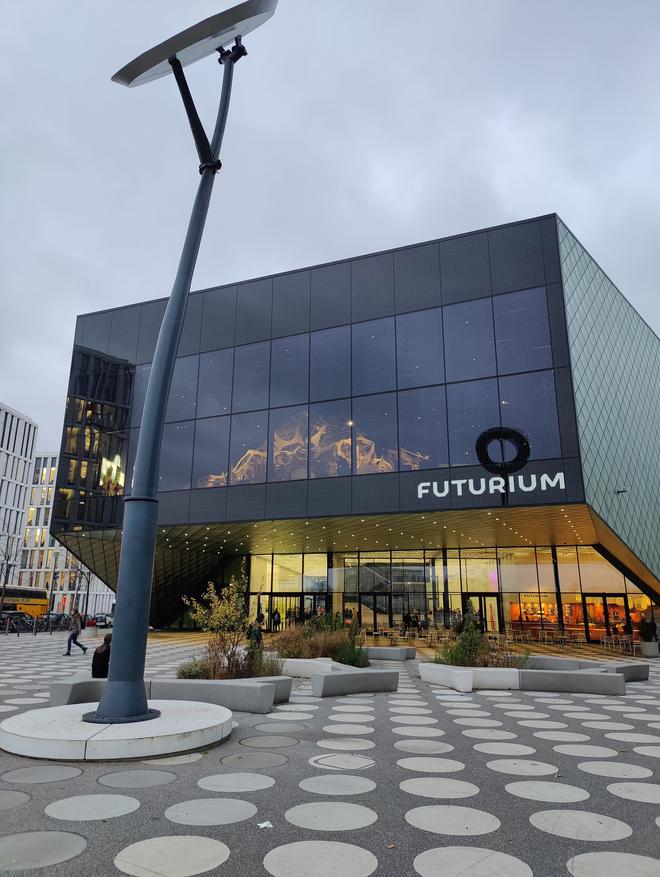
Everything at the museum — built at a whopping 50 million euro — revolves around the question, ‘How do we want to live?’ Its three floors are divided into the Futurium Lab, where visitors can try out futuristic things; the Forum, where they can participate in debates and discussions on topics concerning the future; and the Exhibition on the top floor, where people ‘can discover many possible futures’. Divided into three Thinking Spaces, titled Human, Nature and Technology, each hosts its own exhibitions.
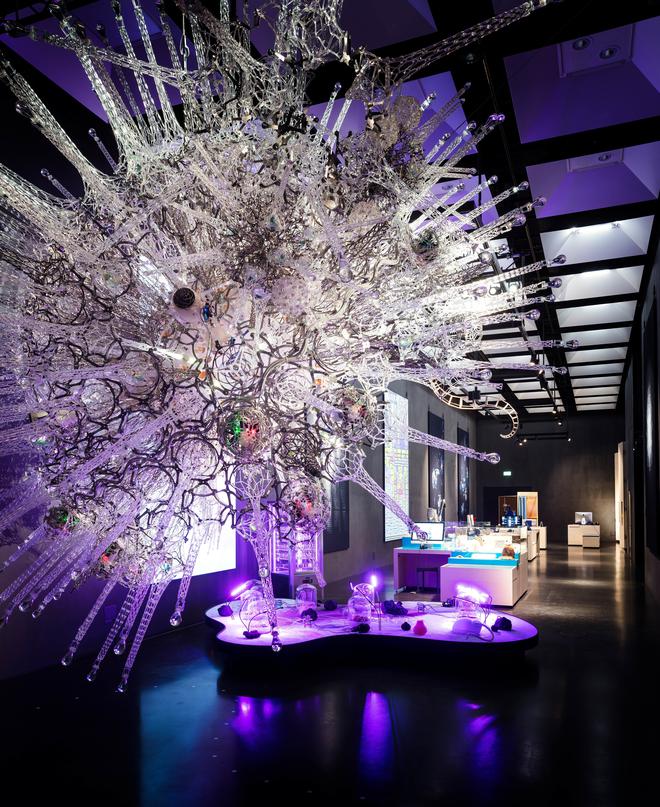
Fostering thinking and debate
When I walk in, I pick up a chip-embedded wristband from a humanoid robot that can be scanned at different contact points, and also be used to download information about exhibits that one wants to explore further.
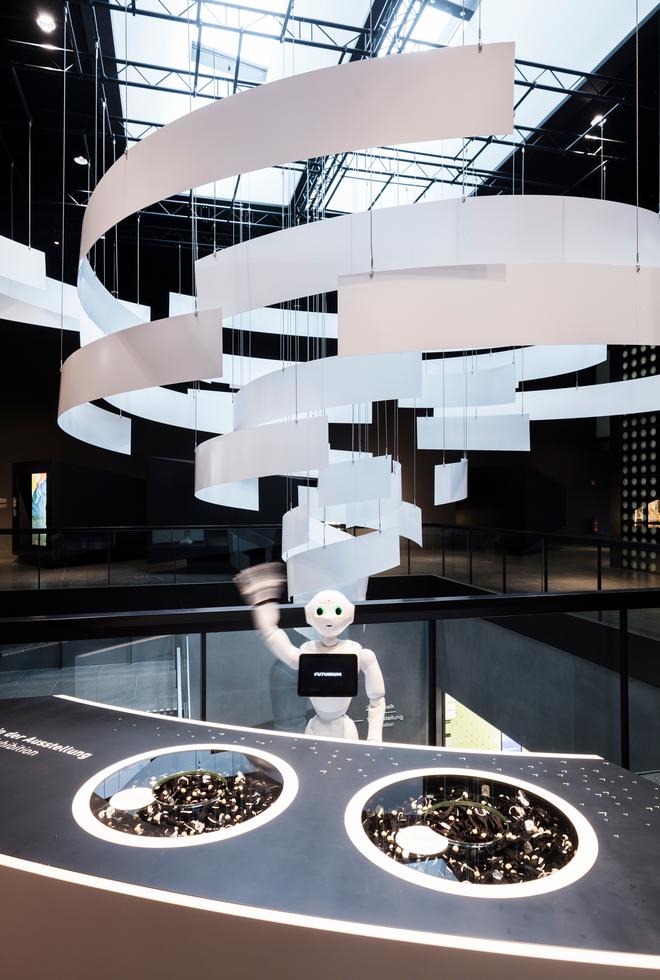
An eight-metre tall biomimetic wooden sculpture catches the eye in the Nature section, which represents the interplay between nature, technology and humanistic design. Above the staircase is a white, twisty installation that looks like a tornado. It represents the great acceleration in global processes like CO2 emissions, population growth and the like over the last 100 years.
“The museum is intended to be a space to foster thinking, discussion and for visitors to come up with questions and solutions,” explains Gabriele Zipf, the head of exhibitions. “It is not a conventional museum that provides all the answers.” Futurium covers a wide gamut of topics, from AI and robotics to fast fashion, agriculture and food reliance — and is a mix of interactive elements, texts and exhibits. Multimedia stations peppered through the space also help visitors actively participate in understanding and designing the future.
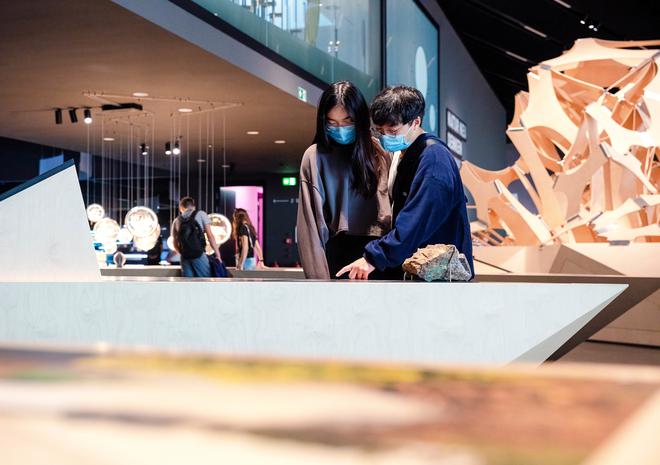
Talking vegetables and intelligent architecture
Ongoing exhibitions deal with various aspects of living in the future, such as climate change (the possible solutions explored range from laying aluminium foil in deserts, to using more green energy, and particle spraying buildings white, to avoid radiation) and consumption. For instance, to bring home the point that exotic foods often travel long distances, there is a fridge where each food asks the other where it comes from.
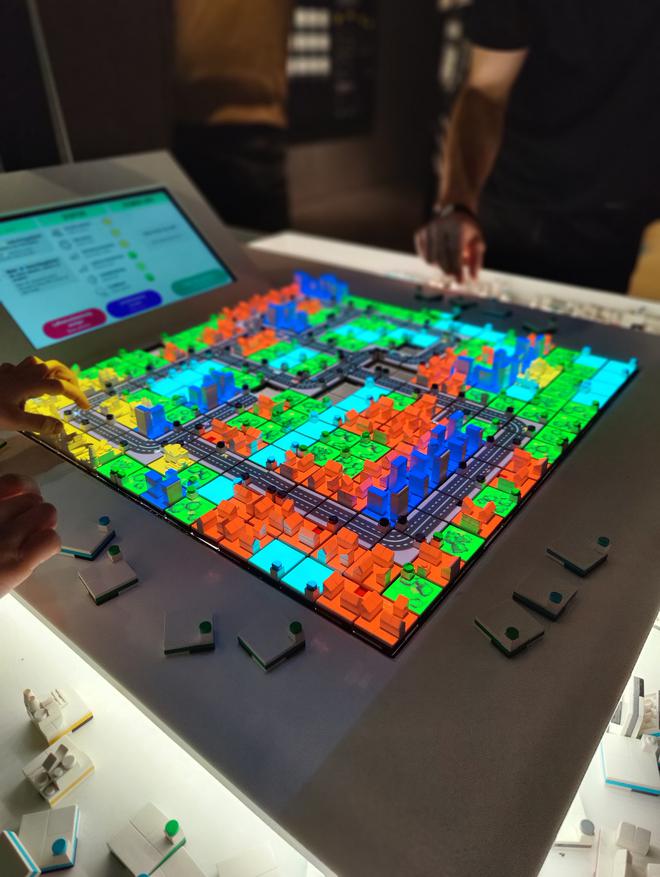
Though it first opened in September 2019, Futurium closed soon after for lockdown. Since it reopened post pandemic, it’s crossed 1.3 million visitors.
I love the Whale Bells project by American artist-activist Jenny Kendler (in collaboration with Andrew Bearnot) — hand-blown ombré glass bells suspended from the ceiling of Thinking Space Nature, with bell clappers made of ear bone fossils of a whale species from the Miocene Epoch. It highlights how whales once sang and found food easily, but now with the oceans getting louder because of human interferences, from oil platforms to military sonars, these giant mammals cannot find food easily. Meanwhile, down at the Lab, Philip Beesley’s Noosphere explores whether architecture can feel, react, live. A spherical sculpture, embedded with artificial intelligence, illustrates bio-design. Its feelers react to movements and sounds, and change their position and light up. Especially when visitors come close for a selfie.
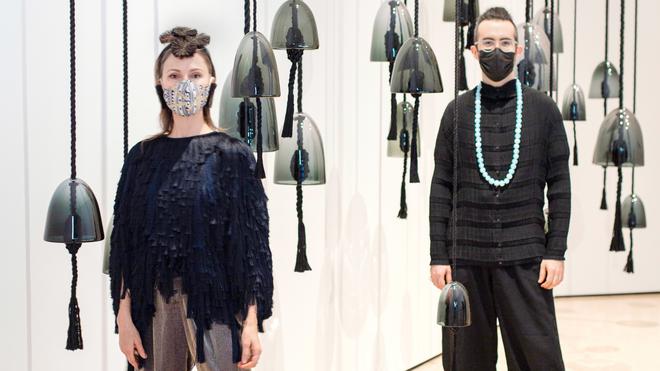
What makes Futurium different is that it’s not just about learning and provoking thought. There are giant swings, colourful loungers, and games to break the monotony. And don’t miss the sky walk that gives a panoramic view of Berlin.
The museum has several plans for the future, including extending its exhibits and adding a new part in the permanent exhibition, on Futures of Democracy. At the Futurium, the future does look exciting.
The freelance travel writer and photographer is based in Chennai.







